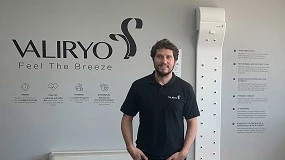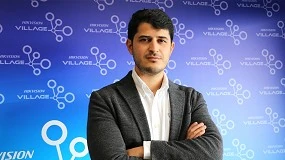Introducing the 4 levels of flexibility in sustainable laboratory building design and construction process
The new global challenges that society must face highlight the need to opt for technology, technology as a lifeline. Among these challenges for the laboratories in the XXI century are undoubtedly the terrible speed at which lines of research change and on the other hand the global world, which now makes it possible that a scientific facility located in a particular geographical environment may need a change of location to ensure its viability. Both can be translated into a clear concept: flexibility.
The proposal presented in this paper shows the possibility of adopting a new laboratory model, people-oriented, to optimize resources and to respect and protect the environment while facing the new challenges of flexibility of XXI century. This is a new way of perceiving and managing laboratories, allowing us to correct past mistakes and move forward. The 3rd & 4th degree of flexibility aims to develop a building system designed for laboratory use which might become an international benchmark for this type of building. Six main objectives are included for this purpose:
1. To provide complete flexibility to the laboratory spaces. This is to optimize the use of scientific spaces by increasing the degree of flexibility in internal and external architecture in order to cover different types of laboratories, uses and needs (both current and future). The laboratories are set up by ever-changing spaces that require being adapted to new develop needs, equipment and technologies. It is therefore essential to create a space that is completely transparent base, flexible to new uses and distributions to apply on it over time.
It is therefore to generate, by the development of the Flex Facilities-Lab concept, some flexible engineering facilities, able to take planned architecture and equipment. This reality leads to a false ceiling which can integrate different facilities a laboratory may require. This technical ceiling allows completely flexible configuration of interior space.
2. Promote the industrialized system in the process of construction of laboratories. It aims for an industrial construction, understanding that it is the future of the building industry, leaving behind semi-artisanal conventional construction. It's about creating a dry and light building system that is easy for assembly and disassembly, and which is manufactured in a pavilion through an industrialized process. This system allows greater control over the various stages of construction, resulting in higher quality and setting time (through the concept of Just in TimeLab).
It is therefore a modular system manufactured and assembled in a pavilion and transported to the site where the laboratory building will stay. This system will in turn convert the fixed assets in mobilized with the consequent benefit to the entity that owns the laboratory.
3. Integrate a series of eco-technological components in the construction elements. This will lead to a high energy efficiency (developing the Save-Lab concept), integration of Renewable Energy (developing the Green Energy-Lab concept), and minimizing environmental impact (developing the Neutral-Lab concept). To accomplish this goal, strategies defined in the Zero Building must be fulfilled, which is considered as the next step towards sustainable building. These Zero Building objectives seek to achieve neutral balance in three key areas: energy, water and waste.
4. Ensure compliance with European standards for safety in laboratories, developing the Safety-Lab concept. The process focuses on designing, planning and constructing flexible, industrialized and ecotechnological laboratory buildings that can be adjusted in a quick and flexible way to different lab types and user needs. Aspects that are constantly changing due to changes in the research, the new equipment, the new instrumentation, new regulatory or legal requirements and last but not least due to new deconstruction and relocation needs of the growing market demand.






